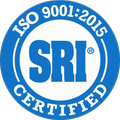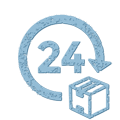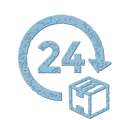Machining Copper Tungsten Alloys
Copper Tungsten composites machine like gray cast iron. These alloys can be bored, cut, drilled, ground, sawed, tapped, and turned. Copper Tungsten Alloys use speeds and feeds similar to Gray Cast Iron. Copper Tungsten Alloy become easier to machine as the copper content increases. The more tungsten content present the more care must be taken when machining. Carbide tools are suggested for most cases and a coolant is optional.
Cutting and Sawing Copper Tungsten
When sawing, use a bi-metal blade; blade pitch should be relative to the thickness of the material. Coarse blades can be run at low speeds, and finer blades run at higher speeds. Coolant can be used. Material can also be cut using high-speed abrasive cutoff wheels.
Drilling Copper Tungsten
Tools – Carbide tooling is suggested. Increased clearance angles and automatic feeds are often used to avoid binding and seizing. Carbide drills will give a better tool life.
Grinding – Use aluminum oxide or silicon carbide wheels of medium hardness.
Milling Copper Tungsten
Tools – Carbide cutters are suggested.
Roughing – Feeds of .007″ to .015″ per tooth at speeds of 200 to 400 SFM.
Finishing – Feeds of .003″ to .010″ per tooth at speeds of 300 to 700 SFM.
Tapping Copper Tungsten
Tools –Use high-speed steel or carbide, two flute plug spiral point taps. A light tapping fluid is recommended.
Turning and Boring Copper Tungsten
Tools – Carbide inserted cutters are suggested.
Roughing – Cutting depth of .030″ to .125″ and .008″ to .015″ feed, at 200 to300 SFM.
Finishing – .010″ to .015″ cutting depth and .004″ to .010″ feed, at 250 to 400 SFM.
Please feel free to contact us for copper tungsten alloy grades and sizes available for same or next day shipping as well as your custom needs.






